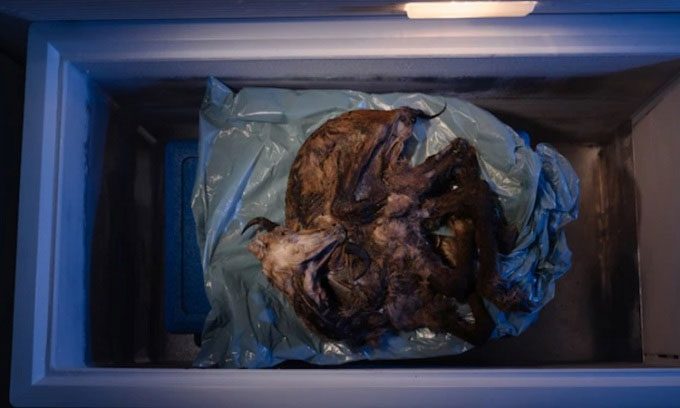A Mountain Goat Mummy Discovered as Glaciers Melt in the Alps
On August 4, Andrea Fischer, a glaciologist at the Interdisciplinary Mountain Research Institute in Innsbruck, used a chainsaw to extract the mummy of a mountain goat from the surface of the Gepatschferner glacier in the Alps. Fischer and her colleagues identified the specimen as a young female mountain goat, standing no taller than 0.6 meters. They estimate it to be around 500 years old.

Mountain goat mummy stored in a freezer. (Photo: National Geographic)
While checking a weather station, Fischer’s colleague Martin Stocker-Waldhuber spotted the goat’s horns protruding from the melting ice at an elevation of over 3,353 meters on the Gepatschferner, a large glacier on the Italian border, last summer. However, at that time, the exposed mummy was too small to safely retrieve before winter snow buried it again. After a significant amount of ice melted this summer, researchers had a brief window to collect the mountain goat remains.
At such high altitudes, weather can change in an instant, making helicopter flights extremely dangerous. If left exposed, the mummy could be scavenged by vultures or decompose rapidly. This urgency meant that Fischer had no time to work meticulously like an archaeologist. After freeing the frozen goat with a saw and ice axe, she lifted it onto a plastic sheet and wrapped it securely.
The skin had come off the animal’s head, taking one horn with it and exposing its deep eye sockets, but the skin along the spine and chest remained intact. Clumps of chestnut-brown fur covered the goat’s hooved legs. The animal was approximately two years old.
The Alps Glaciers Are Melting at Unprecedented Rates
This summer, glaciers in the Alps are melting at an unprecedented rate. Fischer estimates that 7 meters of ice will melt from the surface of the eastern Alps glacier, surpassing any previous year. According to Albert Zink, director of the Eurac Research mummy research institute in Bolzano, Italy, with this rate of melting, more human and animal remains will be revealed.
The mountain goat mummy is safely stored in a -20 degrees Celsius freezer outside Innsbruck, at the Ferdinandeum research center and Tyrolean museum. Researchers plan to perform a CT scan of the animal and examine its internal organs. By studying it alongside another 400-year-old mountain goat mummy found in 2020, they hope to learn more about the species and why these animals wandered onto the glacier and died there. Additionally, this presents an opportunity to gain further insights into the process of natural mummification.


















































